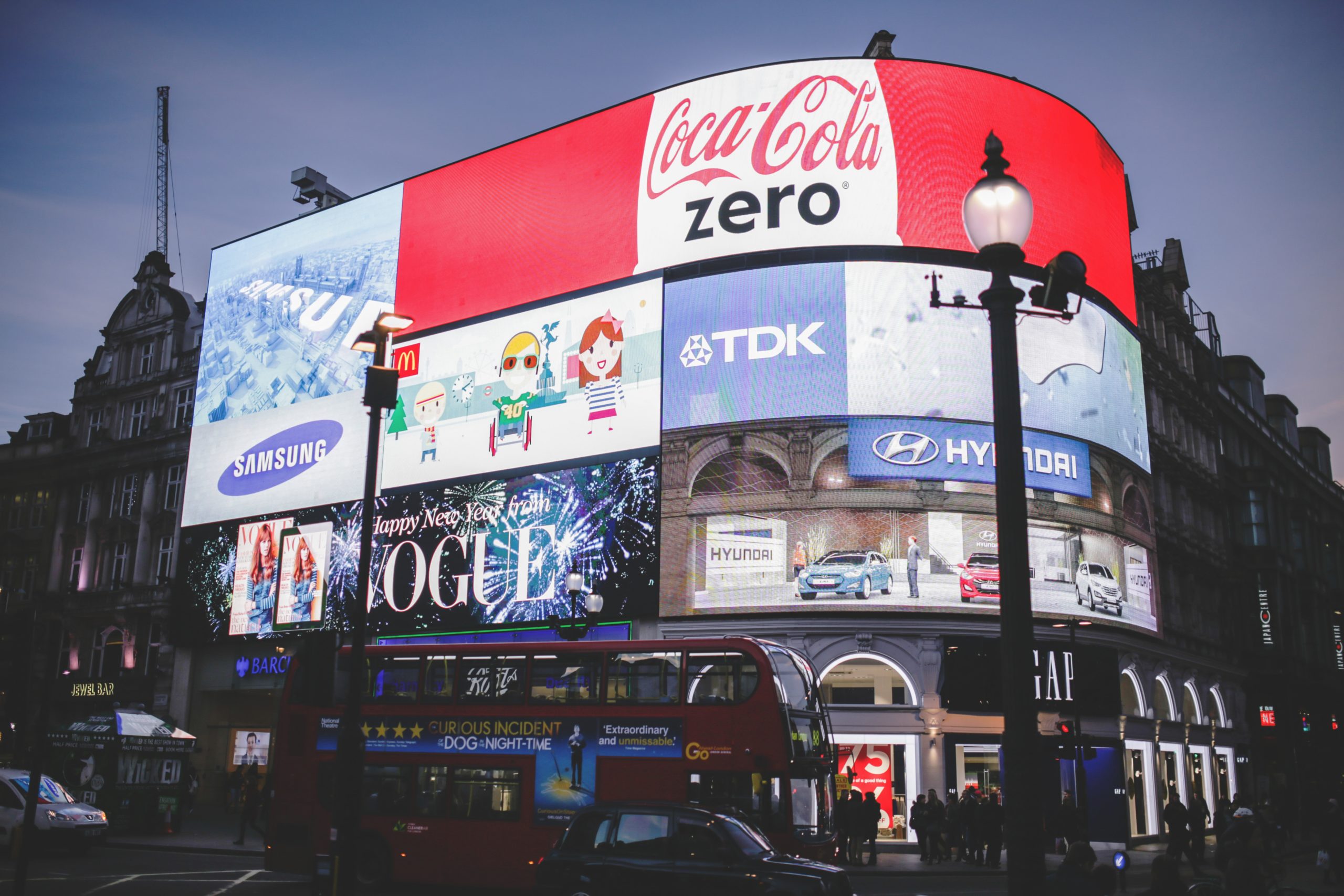Brand growth: what does it take to be radically different? Learn how imagination, courage, and building distinct brand assets are key factors for success.
“Born for sport.”
That was Kobe Bryant’s tagline for the next arena he sought to conquer after basketball — body odor.
His brand growth is a perfect roadmap for you, the struggling marketer looking to capture consumers’ attention, and you only have 150 milliseconds to do it!
How can you score before their attention drifts towards the other team? Let’s get you off the sidelines and into the action.
But before you can jump into the game against your competitors, you first need to be able to envision your brand.
Building A Vision For Your Brand Growth
An AZN survey came out with some pretty grim results when they found out that out of 180 businesses, 80% have a clear mission and vision, but they’re not communicating it, not even to those in their organization.
To dish out killer benefits to your clients, you need to hook them on your vision. If not, you’ll drop off by the wayside.
Customers will pick up when your vision is dancing all over the court, dishing out a collage of mismatched ads that match neither their tone, design, or message. When all of those work in symphony, you can influence people into buying your product without them even realizing it.
Unfortunately, the inverse is also true, in which case you only have 150-250 milliseconds to let your brand’s vision shine through.
When crafting the vision for his body deodorant, Kobe Bryant understood he was playing against a $14 billion industry.
Through his company tagline, he perfectly captured the essence of what his product was all about:
“Born for sport.”
Those three words allowed Kobe and his company to latch onto the path forward and speak to their target demographics — athletes.
By defining a vision for your brand growth, you can center every choice around your brand on that message, from
- Designs
- Fonts
- Messaging
- Keywords
- Platforms
- And so on
As Jessica Hawthorn-Castro, of Hawthrone Advertising, “the heart of the brand is one of the most effective tools a brand can use for targeting its desired consumer demographics,” she said. “This brand personality gives consumers the ability to become familiar with and connect with the brand.”
And at the heart of that connection should be an intriguing story.
Tell A Story
What does a salesman do when he strolls into your house? I’m sure if he’s a salesman worth his salt, he doesn’t immediately start shoving product catalogs against your nose.
More than likely, he finds a connection to you and relates the product to it. For a knife-selling salesman, it might be a picture on your mantle of a birthday party for your son.
Even a girl scout pushing her cart of cookies might land her eyes on your group of screaming children in the background, picking up on how stressed out you are.
By relating how your service works in a storytelling format, you can make your content marketing sing in the eyes of potential clients.
When Kobe Bryant stood in front of the drawing board, thinking of something to connect his new body odor product to the millions of athletes reeking of pit odor, he settled on two words:
Mamba Mentality.
The Mamba Story
By connecting his determined and gritty play style throughout his career to his product, he immediately crafted a strong selling point — one of inspiration.
Other industry brands peddled words such as “fresh” and “cool.” Using his story, Bryant gave his product a fantastic narrative that attaches to the inspiring ability to keep pushing forward, no matter the costs.
“Whether you’re on a basketball team or sitting in a meeting, you’re still dealing with people and the same emotions and fears,” Bryant said.
Inspiration is a universal feeling sought after by everyone, and he gave it universal appeal by attaching that narrative to his “sport” product.
Other times, the world gifts brands a ripe opportunity to capitalize on a ripe and fresh narrative.
When The World Gives You Lemons
When the Syrian Civil War erupted, it casts nations worldwide in a tangle of immigration turmoil. This led to flaring tensions among citizens, with the fence between becoming high and unscalable.
Jigsaw, a fashion brand, jumped on the opportunity in their digital marketing campaign titled, not so subtly, “Love Immigration.”
By illustrating that they couldn’t do what they do without its diverse team of designers, materials, and fabrics, brought together from all corners of the world, they crafted a narrative of inclusion tied into the company’s vision and core values.
On the flip side, Pepsi dropped the ball when they rolled out an ad that landed them on many Worst of 2017.
Kendall Jenner was set to be the face of the ad, which should’ve boded good news for its prospects. But the moment it started to mirror the Black Lives Matter movement, it was taken back behind the toolshed to be shredded by social media due to the stigma that it was trivializing and diminishing the movement.
By crafting a compelling story, you can set yourself apart from the mass of competitors on the court while giving you opportunities to score on news and trends of the day.
Sometimes, that takes courage, as Pepsi learned. As a result, when building up your brand strategy, you’ll have plenty of tough choices to make.
Lead From The Front
Brands are the most successful when they do one thing better than others: redefine the market.
On January 9th, 2007, Steve Jobs bounded up in front of a crowded MacWorld Expo. What he revealed that night would redefine what the smartphone market looked like.
The iPhone would surge past its competitors, shoving them out of the way to score a massive market share. How did it do it?
According to Josh Feldman, Interbrand CEO, the iPhone seized the mobile phone market, turning it into a vast ecosystem where consumers buy games, listen to music, and browse the internet.
All on a single phone. This made it the most significant innovation since the desktop computer and set it on a past of future success and dominance. By following Apple’s strategy, you can stay ahead of the game. By constantly redefining the market, you can set your brand growth up for future success.
Don’t join Nokia and Blackberry in the deep dark depths of brand oblivion.
Be Risky, Be Frisky
Six thousand marketing messages bombard the eyes of the average consumer every day. That means only the boldest, loudest, most genuine brand will appeal to that consumer in 150 milliseconds.
If you want to be that brand, you can’t afford to play it safe. To know how bold, you’ll have to acknowledge one sobering fact:
It’s all been done before.
Originality is a commodity that’s growing scarcer by the second. It’s much like that brilliant animated short by the imaginative minds at Pixar.
What starts as a simple call for the privilege of the coin in a little girl’s hand turns into an all-out war between two street musicians. You need that coin, but it’s not just one musician you’re playing against, but 5,998 others in the marketing world.
Marc Ecko’s Edgy Move
And for Marc Ecko, it founds itself being drowned out in the early 2000s. It was losing its grip on the hip, young skater crowd that it had built its brand on.
In 2006, they took a risk that forced the Pentagon to assure the US public that Air Force One was safe and sound.
In a brilliant display that harkens to guerilla marketing, they filmed a three-minute short that showed a vandal breaking into Andrew Air Force Base and “tagging” Air Force One.
In only two weeks, the ads had pulled in 23 million viewers and put Marc Ecko back into the limelight. But risks should be constant.
Let’s take Instagram. Today, if Marc Ecko pulled that stunt on Instagram, it wouldn’t have given them much time in the limelight — only 48 hours of the social media spotlight.
That could change depending on the ad, but in three days, the marketing team over at Marc Ecko had to be scrambling again for the next great “stunt.” The life span of a trend on social media is distressingly short, so you have to be sure that your marketing team has a content schedule that’s:
- Comprehensive
- Adaptable
Regardless, the power of significant risk is enough to pull in viewers and visitors for weeks until your team concocts the next big thing.
Channel The Power of Social Issues
Perhaps one of the most significant risks was one that Nike took in 2018 when the United States was embroiled in a fierce debate over police brutality. With the NFL being brought to heel by the kneeling of QB Colin Kaepernick, many teams were shying away from him once he was released from the San Francisco 49ers.
But Nike didn’t shy away from the controversy when they stunned the world with their next campaign, featuring Kapernick asking the viewer to “Believe in something. even if it means sacrificing everything.”
This set social media platforms alight, prompting backlash against the company. A counter-campaign was launched with the hashtag #BoycottNike. This might seem like it would drown sales for the company.
Only, it didn’t.
Their online sales spiked by 31%, with athletes coming out to support the campaign. The stunning result of the ad goes to show that Nike understands something.
Much like Marc Ecko, they realize how tuned in younger demographics are to the social issues of the day. Playing on current news and trends and doing so in bold ways can connect to those viewers.
Keep in mind the Pepsi fable — with risks comes the possibility of disaster. So, be sure that your risk strategy is in line with your messaging and the values of your audience.
If you’re not taking bold risks, then your not making tough decisions.
Embrace Tough Decisions
When the company and brand’s culture has been going one way for years, it cannot be easy to adapt to changing trends.
Take Blockbuster.
They failed to read the writing on the wall. In 1994, they scored big with Viacom, but then came the heralding of their doom: a red logo, set against a black background, that read, “Netflix.”
Blockbuster failed to scale back its late fees and stubbornly stuck by the physical model. If only they had heeded this next bit of advice.
Seek Challenging Conversations
You’ll be left behind in digital marketing dust by failing to make changes, which has a huge ripple effect on livelihoods.
In this ever-changing market, you need to be careful of one thing: decision fatigue. This dangerous condition is where you make so many tough decisions during the day that you “phone it in.”
A study of Israeli judges, of all things, illustrated this perfectly. The study found that prisoners who arrived in the prison early were given parole 70% of the time instead of those who arrived late.
No matter how vile their crimes, the judges were so drained of analyzing case elements that they ended up boiling a life or death decision on simple time management.
By not shying away from authentically tackling complex issues, you are setting your brand up to be fluid in changing markets. But that doesn’t mean that you should chase tough decisions willy-nilly, throwing caution to the wind to be edgy and risky.
Just like anything in life, analytics must come into play. So, when a tough decision, put yourself through this simple, three-step process.
1. Question Your Assumptions
Why has this problem come up? Could it be because of an off-brand message, a wonky design choice, or poor communication within the company? You may have to keep asking yourself this question, as sometimes it could be the sum of all three or one singular cause.
You don’t want to burn through resources chasing something that’s not the culprit.
2. Write Down The Effect of the Action
You’ll want to break out the whiteboard and get the team together. This step is where you develop a plan of attack based on what you know the cause of the issue is. If it’s a faulty copy, that might call for an entire relaunch of ad campaigns.
If it’s faulty communication, HR will have to put their heads together, or you might have to look yourself in the mirror.
3. Make Sure You Benefit
Whatever the case, it’s essential to make sure that whatever decision you make, it’s what’s best for your business. When Vishal Garg sat 900 employees down for a Zoom call, it’s easy to see that he failed to run through this three-step process.
His mass-execution-style firing line laid off those 900 workers in a seconds-long Zoom “meeting.” If there was a personable brand tone to the company before, it was blown up by his actions after.
As social scientist Dan Ariely puts it, “thinking is difficult and sometimes unpleasant.” In fact, most people have excellent intentions when making decisions. Still, they fail to analyze the impacts of their choices.
If you have to make a tough brand decision, collaboration is the game’s name if you want to avoid being the next Vishal Garg.
A key to that is always holding fast to critical values.
Stand Up For Your Values
Standing up while kneeling. That was the message of Colin Kaepernick, and Nike’s use of this protest was not lost on Bryan Melmed, VDX.tv VP.
“Publicly embracing the values and concerns of customers is good business,” he said.
In this age of political correctness, the vast array of issues swirling in customers’ minds is also plastering their social media feeds. This makes social issues prime real estate to tie your marketing message to.
BY being bold and brave in your marketing, you can cash in on “an era where mental association is far more valuable than shelf space,” Melmed noted. Nowadays, customers are starting to expect their brands to reflect their thoughts and feelings about the day’s issue.
If your brand plays it safe and stays on the sidelines, then your brand’s trust could fall victim to the social issues of our time. But in your rush to out-score your competition, don’t get caught up trying to beat them at their own game.
Play Your Own Game
Disney is that thief in the night. Their continued conquering of the media landscape reached its peak when they reached into Netflix’s wallet and walked away with what was “theirs”: some of the kings of movie franchises.
By creating their streaming service, the company jumped into a market that was thoroughly dominated by Netflix but came in with an edge: exclusive Disney intellectual property.
And the public took notice.
According to Variety, consumers believe that Disney+ has a 30% higher value than an average video streaming service, with two of the three haymaker franchises residing at the Mouse’s streaming service: Star Wars and Marvel.
By absconding with a big chunk of premium exclusives, Disney is playing on the same court as Netflix but has an exclusive playbook that will be hard to match for the behemoth streaming service.
As Disney proved, sometimes it’s easier to tweak what’s not broken.
Tweak, Don’t Build
New concepts can be resource-draining. They require more extraordinary leaps for investors and often see a whirlwind of proprietary software sucking their money into profitless abysses.
Instead, do what Paul B. Brown suggests: “It’s always easier when you’re starting a company to try and improve an existing idea,” he said to CNBC.
And the recent list of companies all seems like mirror images of the other, from:
- Instagram to Facebook
- Paypal to Payoneer
- Tiktok to Snapchat
- Star Wars Force Awakens to Star Wars Empire Strikes Back
- Ahem…
In this day of cut-throat marketing battlefields, there’s one fantastic weapon you can deploy to help your brand stand out amongst the rest.
The Battle of the Brands
Customer perception defines who and what a brand is. Your brand isn’t what you say it is; it’s how the customer views you.
To see an example of this, we’ll go into the world of politics amidst the raging fires and sweltering heat of the Vietnam War. It was 1964, and the battle between Lyndon B. Johnson and Barry Goldwater was heating up. But if Goldwater was a brand, it made a seriously fatal error that was tone-deaf considering the thousands of body bags being brought home from ‘Nam.
He had expressed interest in escalating the inferno of war, and Lyndon Johnson capitalized. He ran only one ad, called “Daisy,” which cast Goldwater as war-mongering, and Johnson would win the largest majority in 140 years.
So, much like Napoleon suggested, “never interrupt your enemy when he is making a mistake.” By keeping on top of what your competition is doing, you can define your brand as something genuinely different that speaks to them and their issues.
To do this, ask yourself these three fundamental questions:
- What you can learn from and do better?
- What are they doing worse than you?
- What are they doing the same as you?
If they are doing something better, change how you’re doing things. Just remember that the key is to innovate, never imitate.
Find Your Mamba Mentality
“To be able to constantly try to be the best version of yourself…it’s a constant quest to try to be better today than you were yesterday.”
According to Kobe Bryant, that is the definition of “Mamba Mentality.” And if you don’t try to better your brand growth every day, you won’t rise to meet the challenges of your competitors.
So, have your brand leading, not from the sidelines, but from center court. We can help you build a game plan to get your brand back on top with our team.
Need Help With Growing Your Brand?
Brandhouse is a creative brand marketing agency specializing in brand strategy, brand identity, and brand marketing. We position ourselves as the chief brand marketing officers for service-based start-ups who are passionate about innovation and building memorable mission-driven brands. Our services are designed with founders and start-ups in mind. On-demand holistic brand marketing services that can support brand building at various stages of growth – brand awareness, brand consideration, and brand preference.





